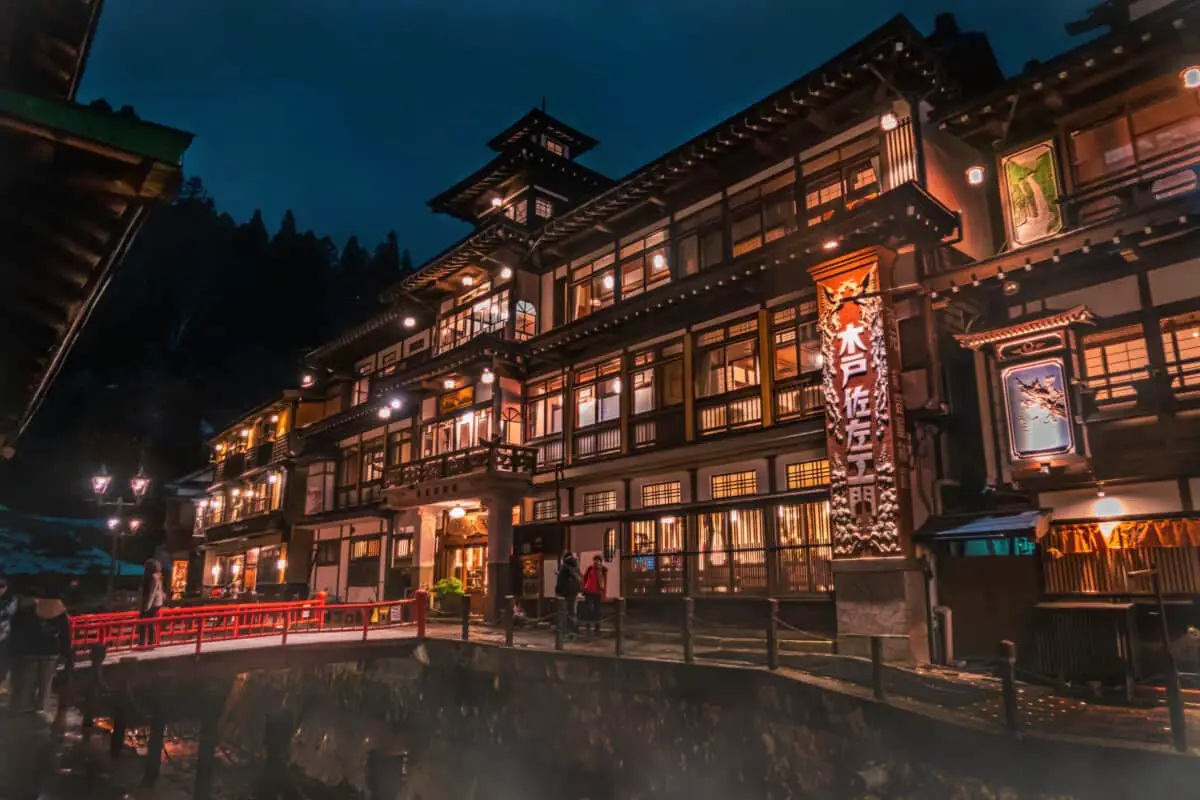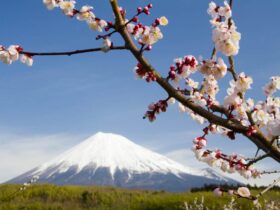Ginzan Onsen is a secluded hot spring town tucked away in the mountains of the Yamagata Prefecture. The townhouses have multiple ryokan or inns; three or four-story-high buildings whose white plaster walls and exposed woodwork evoke feelings of nostalgia for Japan’s bygone days.
Continue reading to find out everything you need to know ahead of taking a trip to this picturesque town. Why Ginzan Onsen is so popular, which season is best to visit, and why there’s more to do than simply soaking in the rejuvinating mineral waters.
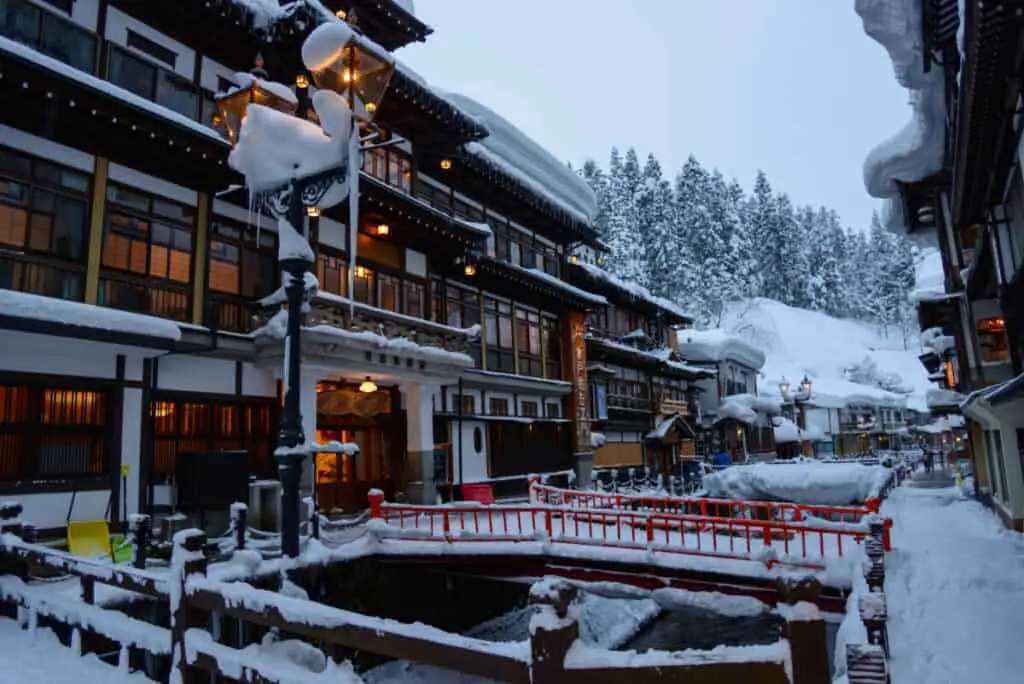
Why Is Ginzan Onsen A Good Place To Travel?
Yamagata is abundant with many onsen, with pretty much every village holding at least one. One of the main draws to Ginzan Onsen, in particular, is its nostalgic feel and traditional buildings. Visitors can enjoy the architecture while tasting famous gourmet Japanese delicacies.
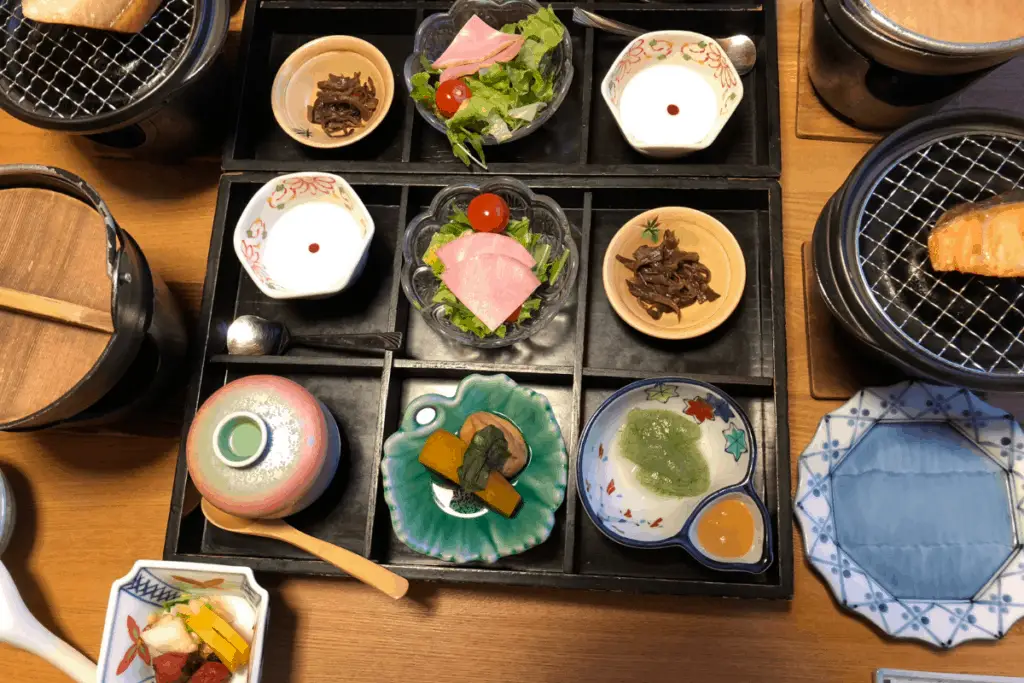
With a name that translates as silver mine hot spring, Ginzan Onsen town began in silver mining, transitioning to a tourist town over time as it opened several hot spring resorts along the river that runs through the town.
The town itself is very compact, and it only takes only minutes to walk from one side of Ginzan to the other. With its nostalgic atmosphere and beautiful mountain backdrop, Ginzan Onsen is popular with domestic and foreign travelers.
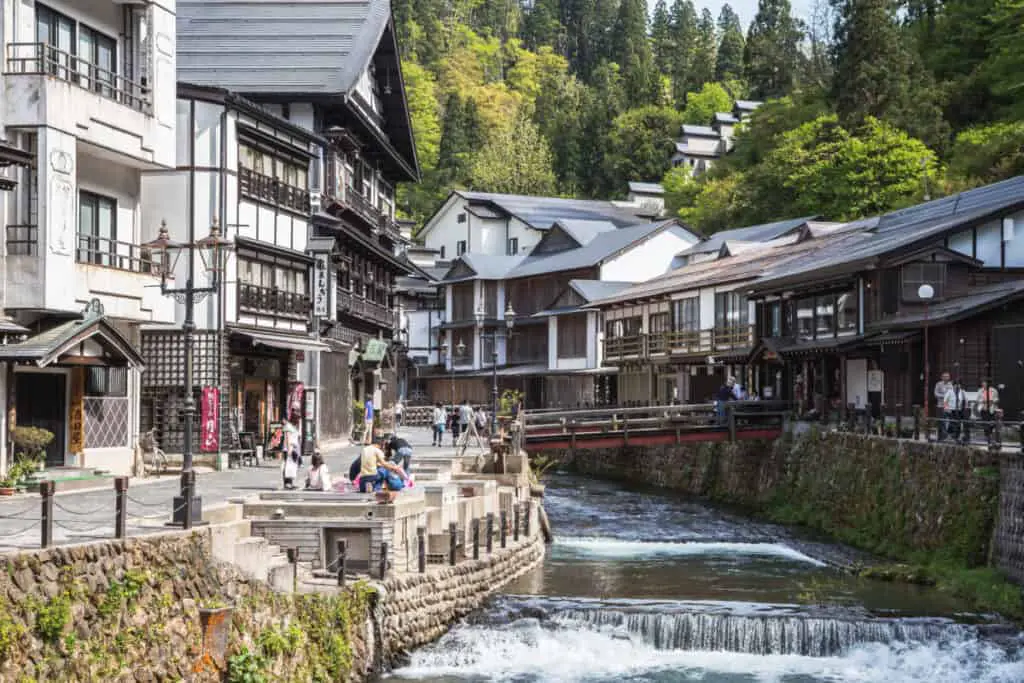
Ginzan Onsen grew in national popularity after featuring in the popular TV drama, Oshin. Thanks to the show’s success, Ginzan Onsen receives hundreds of thousands of domestic visitors within Japan each year.
Oshin Television Drama Via Wikipedia
The village has also grown in worldwide acclaim thanks to its feature on international travel sites worldwide and is famous for its snow-covered winter landscapes.
What Is A Ryokan?
The ryokan inns in the small mountain town are more than 100 years old and line both sides of the Ginzan-gawa river stream in neat rows. Styled on traditional architecture, these buildings are three or four stories high with white plaster walls and have nostalgic details.
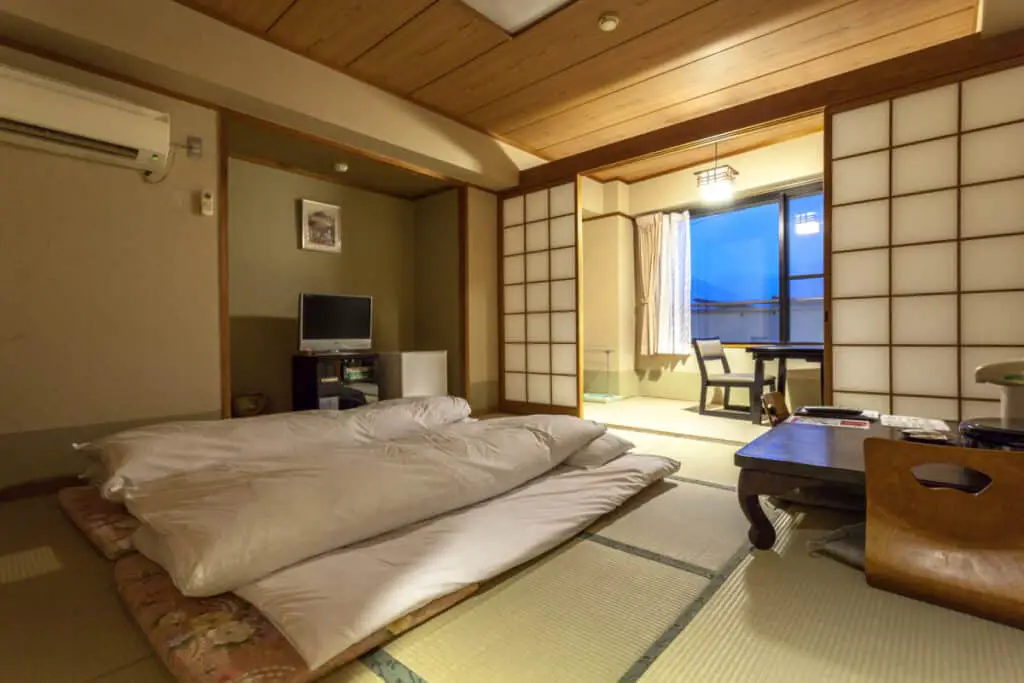
Nestled amongst the traditional ryokan is a single modern building, styled by architect Kuma Kengo. The Fujiya ryokan is unique but holds many conventional design elements, including white plaster and exposed wood.
Fujiya Ryokan Via Selected Onsen Website
What Will I Find In Ginzan Onsen?
Mountains surround the town, which yields hot spring water for use in private hotels and the city center’s public baths.
Ginzan Onsen’s town center is a pedestrian-only zone because of its narrow streets and unavailability of parking. During the evenings, the bridges and roads light up with gas lights, which illuminate the area.
During the winter, snow covers the surrounding scenery, a sight that this town has become famous for.
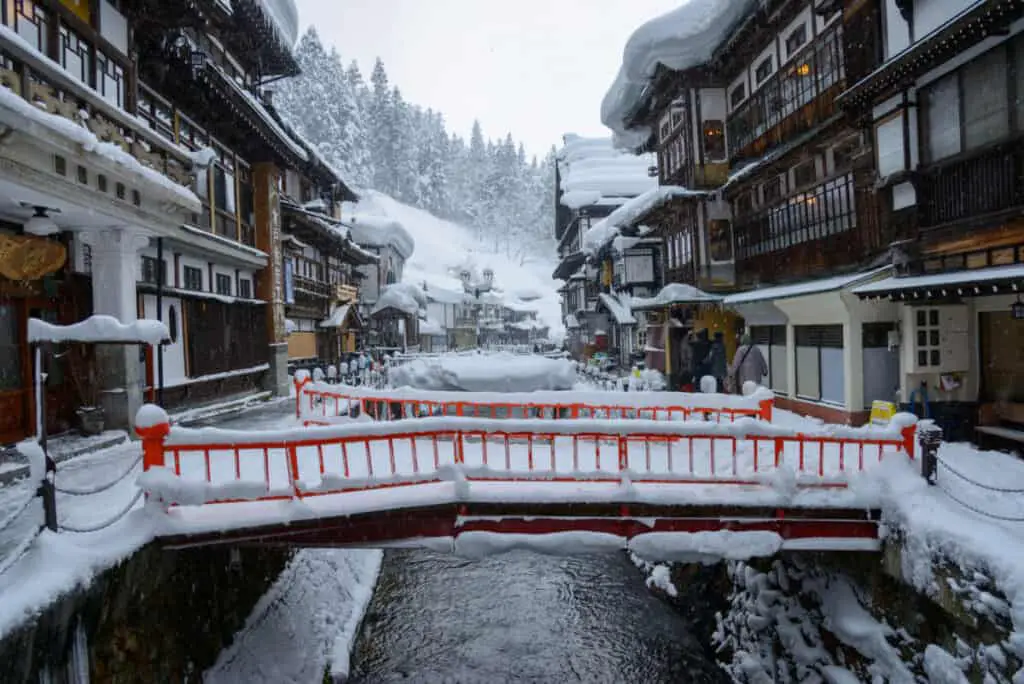
At the back of the town, a stunning 22-meter waterfall resides. The Shirogane-no-Taki Falls is a popular tourist attraction, and at the halfway point of their descent, the falls split into two separate drops, one that is rapid and bubbling, while the other stream gently down the rocks.
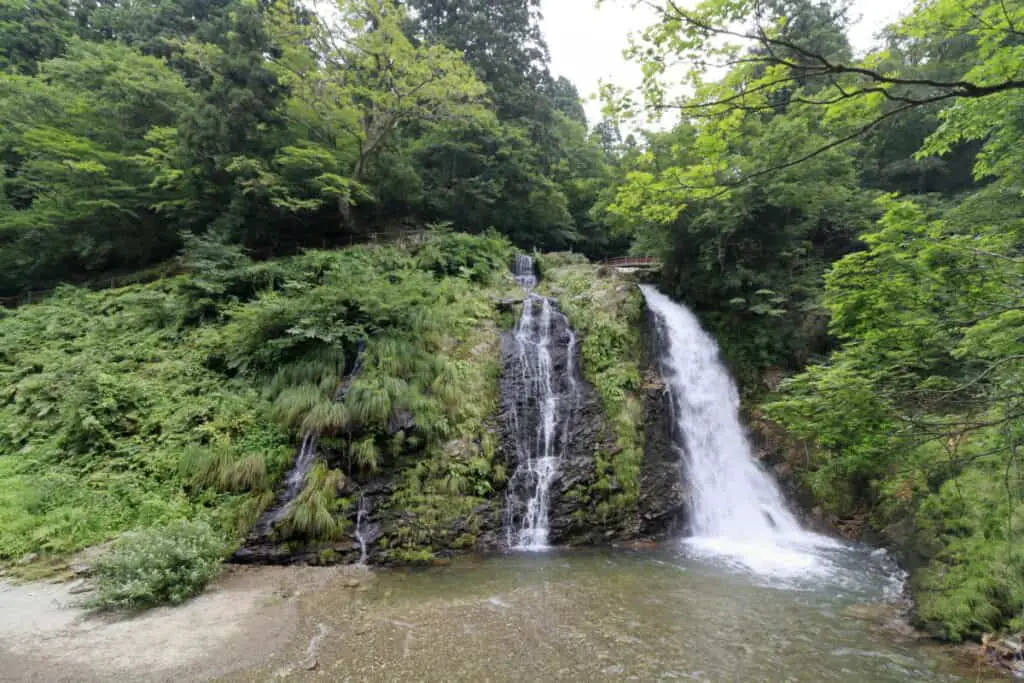
Venturing further into the Shirogane Park, you will discover the Taki-no-Fudoson, home to the guardian deity of these picturesque falls.
Near the base of the Shirogane-no-Taki Falls is one of the entrances to the town’s historic silver mine that was a powerful economic source for the residents during the Edo Period. The tunnel is accessible, but only to about 20 meters (65 feet).
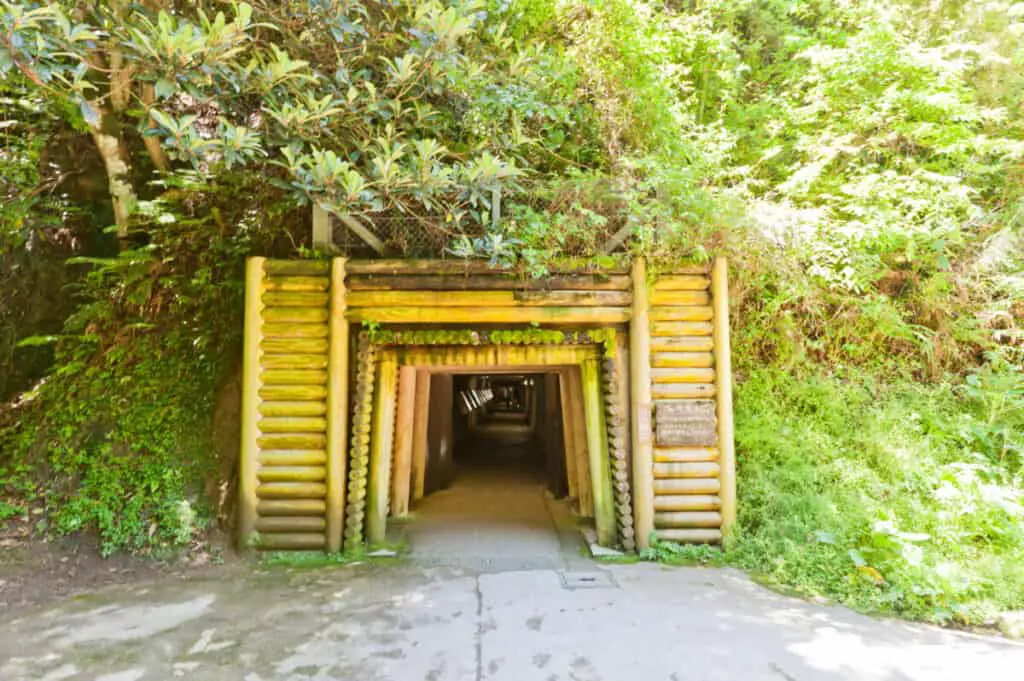
If you want to view more of the mines, you can follow a nature trail up into the valley, where there is a longer section of the mine for people to enter. However, it’s worth noting that the route to this entrance is not available through the winter and early spring due to heavy snowfall.
How To Get To Ginzan Onsen
From Tokyo, take the JR Yamagata Shinkansen to Oishida Station, a journey that takes around three and a half hours and costs roughly 12,000 yen. Once you arrive at Oishida station, buses depart every 60-90 minutes to transport you to Ginzan Onsen.
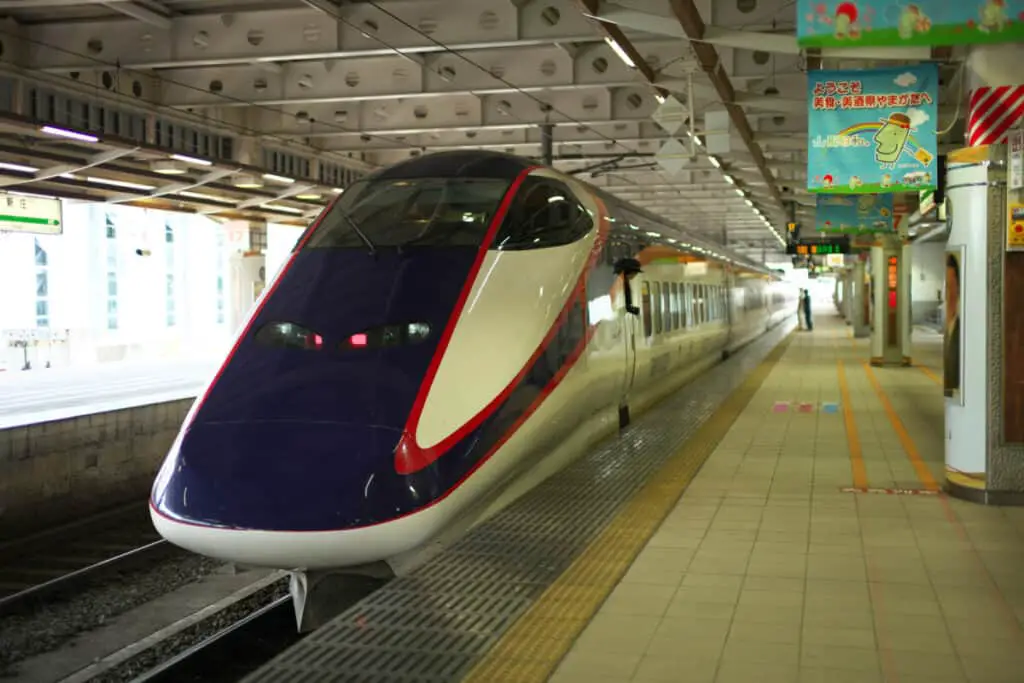
If you’re traveling around Japan purchasing a JR pass can save you money on travel costs with prices beginning at around 31,000 yen for a seven-day pass. The Japan Rail pass allows you to travel on a vast number of trains, buses, and ferries within Japan.
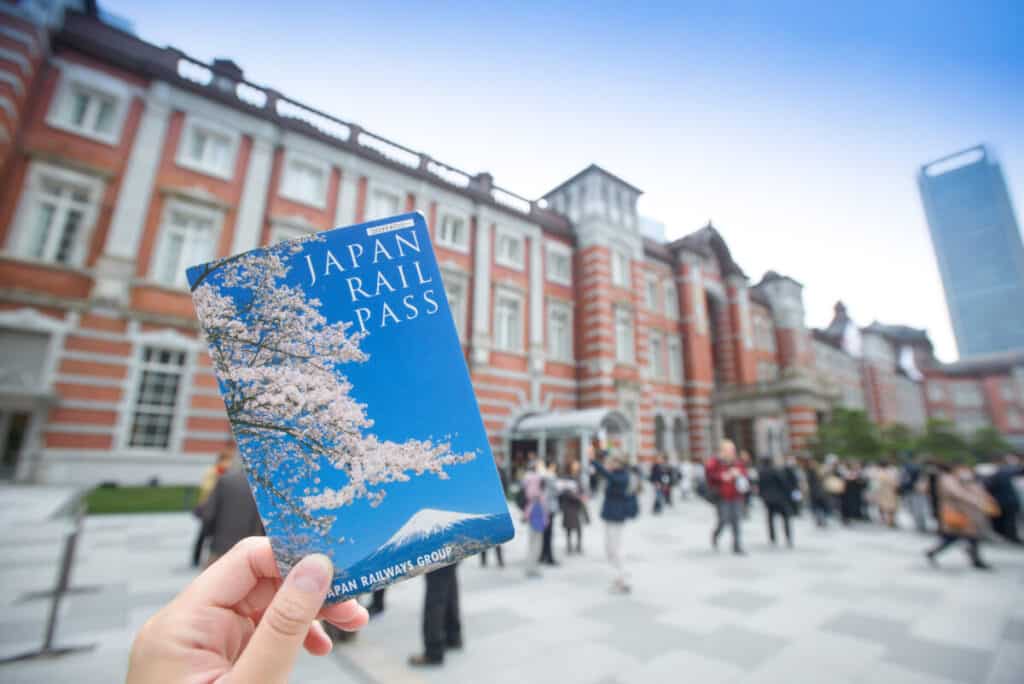
Alternatively, you can rent a car and drive the route yourself. Parking is available in locations around five to ten minutes’ walk from Ginzan Onsen, and the owners of ryokan will often pick guests up from these parking lots.
Yamagata Rental Cars Via Kayak
What Is The Best Season To Visit Ginzan Onsen
The town is famed for its landscapes which attract many visitors during the winter season.
Additionally, Ginzan Onsen is a hot spring town, so tourists may enjoy its main attractions through the cold winter months.
Ginzan Onsen is a beautiful spot to visit at any time of the year, and it depends on what you want to draw from your experience. Winter is great for snowy scenery and making the most of the hot springs, while summer boasts longer days and more time to explore this quaint mountain town area.
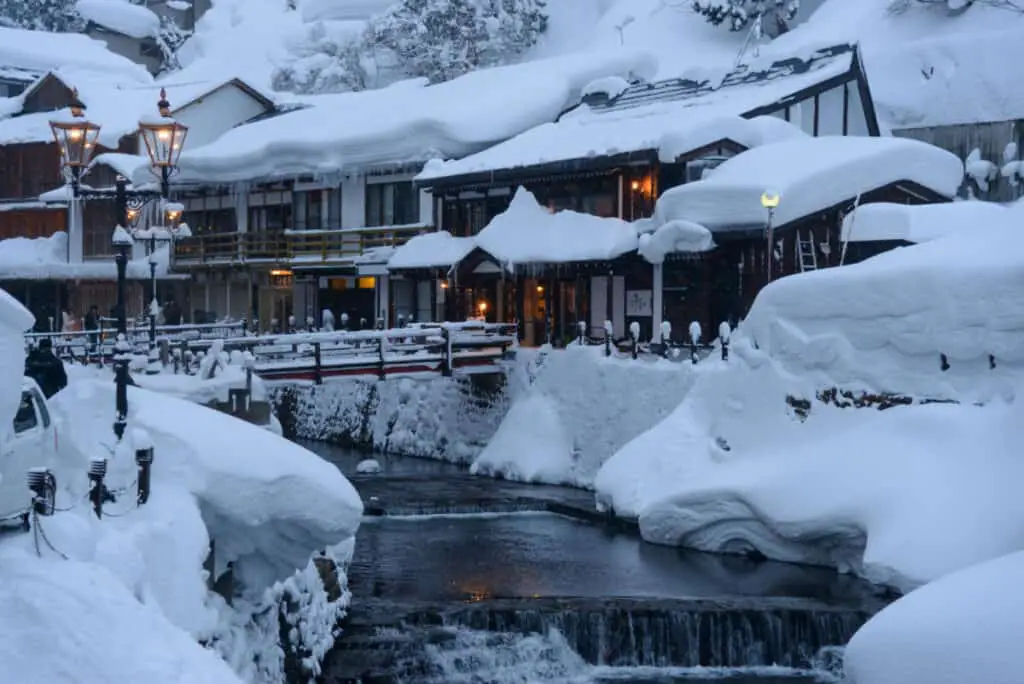
The snow begins to fall at the beginning of December and continues until mid-March, with the heaviest snowfall between January and February. If you are traveling during the winter, it’s important to note that snowfall is often over a meter (3 feet), so you’ll need plenty of warm clothing and non-slip winter shoes.
Things To Do In Ginzan Onsen
Exploring this quaint little town is an activity in itself, especially during the winter, when snow-covered scenery presents the perfect photo opportunities. If you’re traveling during the winter, sunset is a great time to capture pictures of the mountain, remembering that it will be dark normally by 6:00 pm.
Public Baths
The town center hosts two public baths, costing 500 yen each, and a free-to-use foot bath. Kuma Kengo is the designer behind Shiroganeyu and is unique in its triangular-shaped design. The bath inside is large and allows up to five people to enter at the same time.
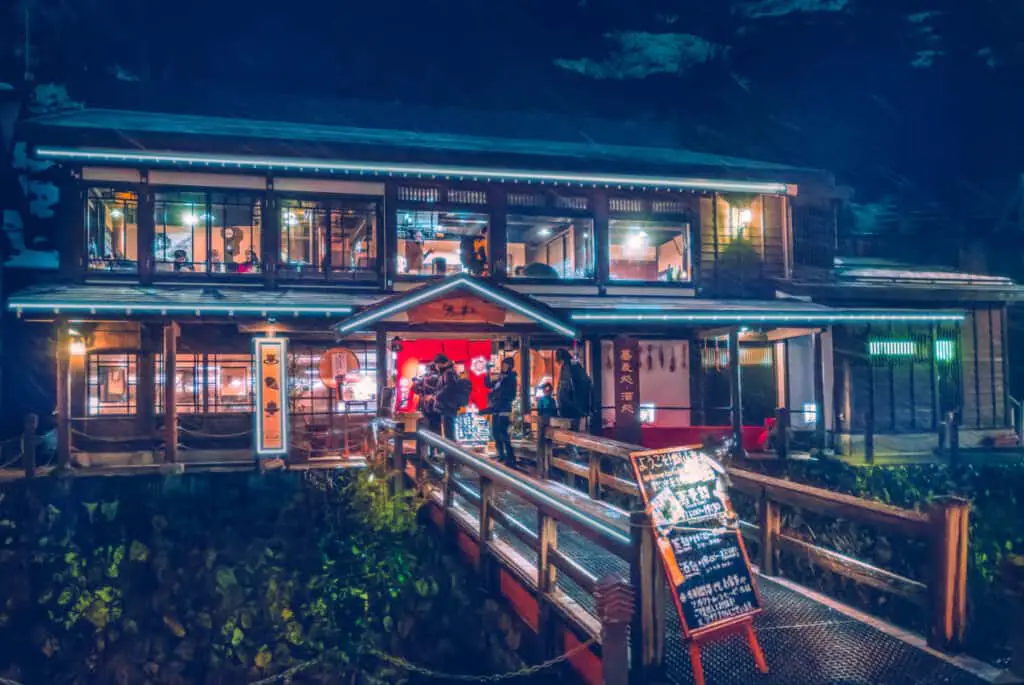
Additionally, travelers can use the public baths Omokageyu for private use at the cost of 2000 yen for 50 minutes. And many of Ginzan Onsen’s ryokan open their baths to non-guests for between 500 to 1500 yen during the day.
Famous Japanese Cuisine
Ginzan Onsen isn’t famous for hot springs alone. The town boasts some of the finest Japanese cuisines amongst its restaurants and eateries. On Haikara-san street, visitors can taste the world-famous curry bread.
The bread, composed of Nebarigoshi wheat, is filled with curry before frying. While its outside is crispy, the inside maintains a moist texture and has a spicy aftertaste.
You can find another famous food at Nogawa Tofuyam, a hundred-year-old shop famous for the Tachi-Kui Tofu. With fresh handmade tofu, the flavor and texture of this dish have received high praise from a multitude of happy customers.
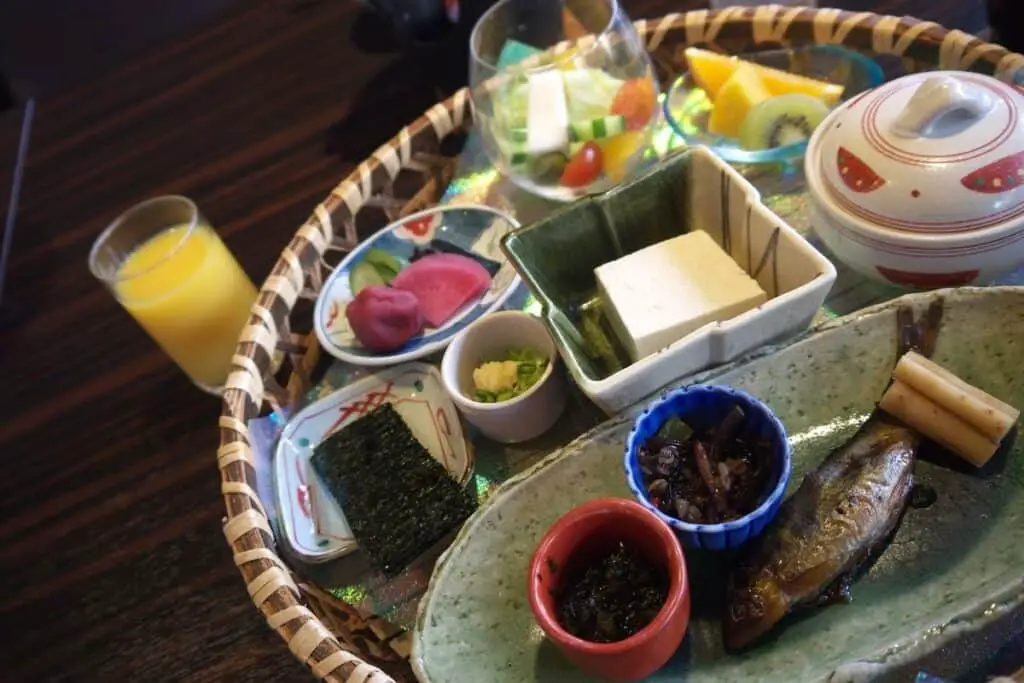
A popular lunchtime eaterie is Izu-no-Hana, where you can try soba or Japanese noodles topped with fried eggplant. Alternatively, try the famous dish of Yamagata “Itasoba,” which is one and a half times larger and includes fried prawns and vegetables.
The Shirogane-Bashi Bridge lies at the entrance to the town and is five minutes walk from the local bus stop. Next to this bridge, you will find the free foot spa, Warashiyu, where you can bathe your feet in the naturally hot water.
Dress Like A Local
If you’d like to immerse yourself in the local Japanese culture fully, why not don the traditional dress with a trip to Cafe I’rasgayna. The shop offers a variety of kimonos and hakama that are available for males and females to rent.
Cafe l’rasgayna Official Website
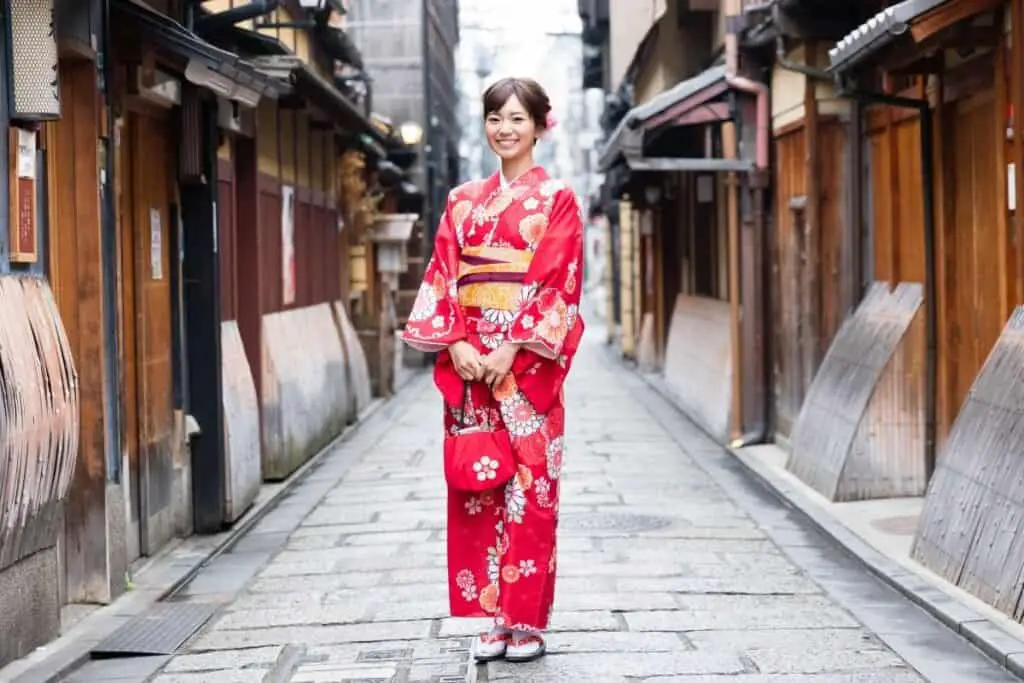
Additionally, you choose matching accessories such as bags and umbrellas to complete your look before strolling down the vintage streets and capturing your memories on camera. Though it can be challenging to dress in a kimono, experts are on hand to help you dress easily and look great.
Ginzan Onsen and Ryokan Rental Via Japaneseguesthouses.com
Conclusion
With snow-covered winter landscapes and cool summers nestled in this idyllic mountain village, Ginzan Onsen is the perfect escape during any season of the year.
Whether you’re looking to soak up traditional Japanese culture or sample some of the best cuisines the country has to offer, Ginzan Onsen provides an array of activities for your trip.
Virtual View Of Ginzan Onsen Town

